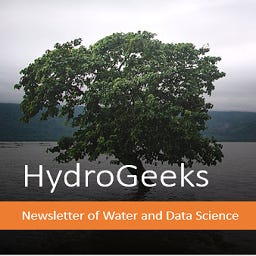WATERWAYS AND WATER TRANSPORT by J. STEPHEN JEANS, M.R.I., F.S.S.
This book was published in 1890. It describe about the waterways and water transportation that exist in the seventeenth century. If you are interested in Transportation by Water this is your book.
Please Note: To continue access to this article after the initial seven days, please upgrade to a personal or paid membership against a meagre cost of Rs.600/= per year. If you want to promote your Job/Scholarship/PhD/Post Doc or any other types of opportunities in The HydroGeek Newsletter, then kindly upgrade yourself to an Institute /Founder (Cost : Rs.2500/yr.) or Group(Cost : Rs.750/= per yr.) Membership (if you want to pay in USD then Click here)
The history of transportation is largely the history of material progress. It is difficult to imagine a prosperous society without the knowledge of the arts and sciences for commerce. The natural arrangement of land and water is not the most convenient for commerce and travel, as oceans and seas have unsuitable routes, and rivers are often rocky and shallow. Knowledge of roads, bridges, and canals has been acquired and slowly applied, but the aboriginal inhabitants of a country usually cared for none of these things.
Man eventually established a system of interchange of commodities, which led to the creation of roadways over which traffic could be rudely transported on the backs of mules, horses, or other beasts of burden. As exchange and barter extended, the pack-horse became inefficient, and districts near the sea or placed on navigable rivers with easy access to the ocean became developed at the expense of other districts with equal facilities except transport.
A hundred and thirty years ago, England was in a different position to that which it occupies today. The woollen trade was the greatest national industry, and the cotton industry was just beginning to take a firm root. The woollen trade produced five or six millions of tons per annum, while iron production was believed to be about 100,000 tons. The working of coal far from the seaboard was impossible on a large scale due to the lack of means of transportation that would allow anything being carried more than a few miles, unless it was of the highest value.
The condition of roads in the 18th century was a matter of serious complaint, with many people complaining about the poor conditions of public thoroughfares and streets. In addition, there were dangers and troubles in the absence of a proper police system, and streets were enveloped in darkness, making it difficult to travel abroad after nightfall. The Vauxhall and Ranelagh Gardens had to employ patrols to keep the way clear to London.
Please Note: To continue accessing this article after the initial seven days, please upgrade to a personal or paid membership at a meagre cost of Rs.600/= per year. If you want to promote your Job/Scholarship/PhD/Post Doc or any other types of opportunities in The HydroGeek Newsletter, then kindly upgrade yourself to an Institute /Founder (Cost : Rs.2500/yr.) or Group(Cost : Rs.750/= per yr.) Membership (if you want to pay in USD then Click here)
The information provided above is presented in the order in which it was received from the source. The application link and dates are the same as those that were provided by the source. Shared knowledge is based on what is received. the author of this post and HydroGeek are not liable for any liability or damage resulting from the use of this information. Additionally, our Terms and Conditions as well as our Privacy Policy are presented here for your perusal. After taking into account the honorarium and the cost of maintenance, the amount that is obtained in exchange for the membership fee or through any other methods, if any, is then donated to non-profit organisations.
If you want to add a PhD Position/Post Doc/Job Opportunity that you want to offer to HydroGeek Subscriber, then please email me the content and link for applying at: contact@baipatra.ws or Chat with me through Substack
You may also like
Very Short-Term Course on Hydroinformatics
My YouTube Channel: Mrinmoy’s Views
Call for Paper for Virtual Forum on Water and Environment 2025
Lecture Notes on MCDM: Learn with Example 12 MCDM Techniques
Artificial Intelligence and its Application on Water Resource Development
Host and Earn(AD)
“Teaching marketplace with over 1,30,000 courses!”(AD)





